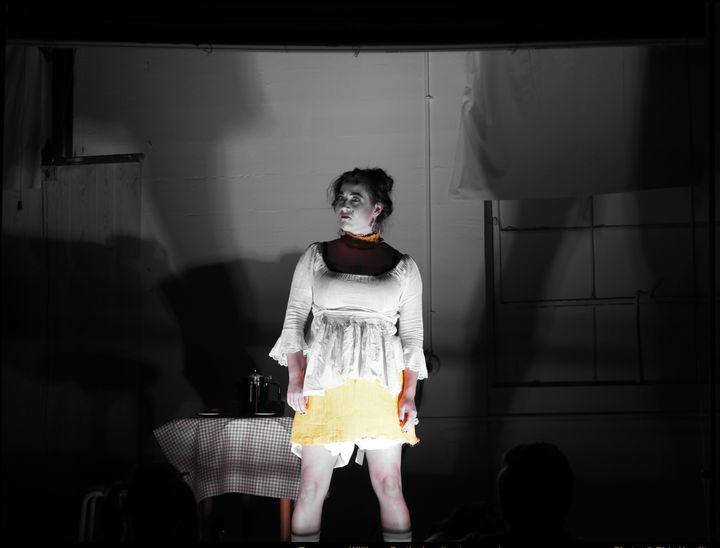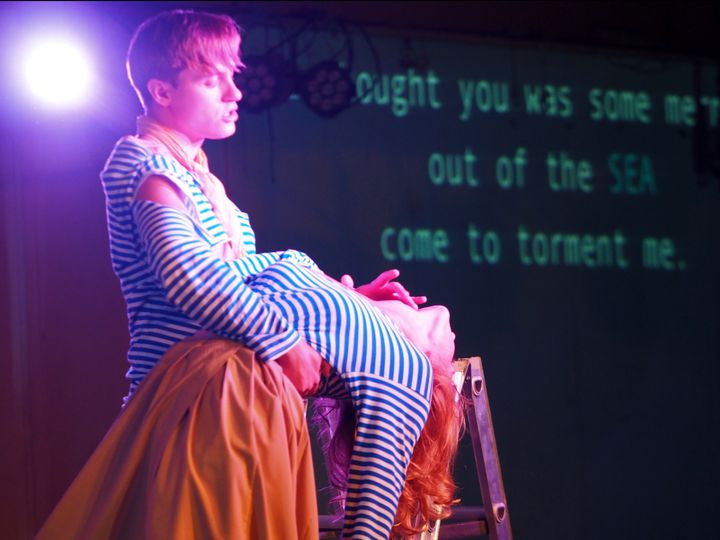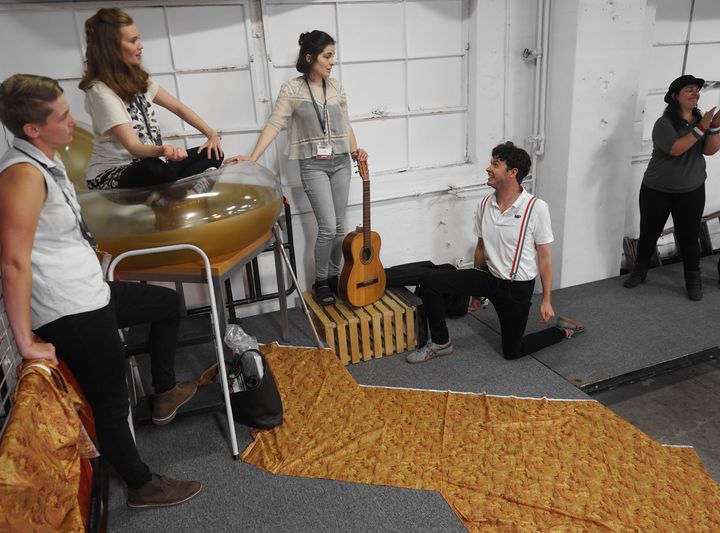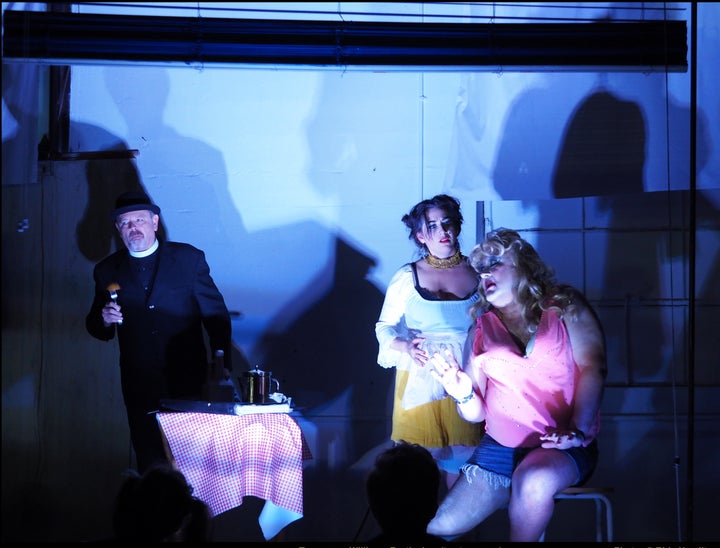
As my ferry pulled into Provincetown, MA, I could hardly contain my excitement. To be in this historic place, the town where American theater was effectively born in 1916 when Susan Glaspell’s Trifles and Eugene O’Neill’s Bound East for Cardiff were produced by the Provincetown Players. Tennessee Williams added his fame to the theatre mythos of this storied Cape Cod town by also frequenting its shores. This year the Provincetown Tennessee Williams Theater Festival celebrated its eleventh year by featuring works from both Williams and O’Neill, making the comparisons and contrasts stand out starkly for both of these venerated playwrights.
My first entry in this series was an interview with the three female directors of Eugene O’Neill works at the festival, which is an excellent background piece to my thoughts here. So, if you have not read that, you might want to begin there. This article covers the first day of the festival, and over the next few days I will release the following two installments covering the following two days.

Tango Christie
Eugene O’Neill’s 1922 Pulitzer-prize winning play Anna Christie is a tale of an ostensibly former prostitute whose decision to board a barge with her father changes her life in more ways than one. This first production of my festival experience was performed in a structure at the end of a wharf and translated this play into Russian while, as the title states, using the tango as a structuring metaphor. Incorporating many aspects of dance and choreography into a pared-down version of the play, I applaud this company’s revelation of the ways in which Anna is physically and emotionally thrown about in the process of the action. Though O’Neill’s character is ostensibly the heroine of her namesake play, Anna’s role in her own story is still heavily reliant on her father Chris and her new beau Matt. These two men, both sailors, move Anna about the play like a doll until the very end of the play, where they leave her
Director Alla Korovkina, composer Vasily Tonkovidov, and choreographer Victoria Maximova created the movement and feel of a stylized ship and life at see quite beautifully. All three actors, Aleksei Mezhennyi (Chris), Tatiana Korovina (Anna), and Syiatoslav Alshanov (Matt), were obviously very trained, and created some beautiful stage pictures, and they handled both the text and movement elements beautifully. The use of songs and dolls added to the elements of artifice in the play, though in way that romanticized the text quite greatly. This is understandable, but is rather troublesome to watch, especially when, for one example, the man Anna is later shown to love originally appears to attempt to rape her on stage the first time we see him. Because the play was performed entirely in Russian (a language I do not speak), without a great many supertitles, the elements of movement and physicality came to speak far louder than the words. I really enjoy watching plays in languages I do not know without supertitles, but I understand that not everyone does, and that this would be an unfortunate surprise for some. There were some very interesting raw elements in this production, such as the use of doll versions of the characters along with the performers. However, they did not fully integrate the dolls into the production, which allowed that intriguing concept to fall flat. Overall, this production had some enjoyable visuals, but was not as exciting as it had the potential to be.

Marco Millions
When I first heard that O’Neill’s wild and wacky tale of Marco Polo would be presented at this festival, I couldn’t wait to see it. I find Marco Millions to be one of O’Neill’s oddest plays. I find the stage directions far more interesting than most of the dialogue, though there are some shockingly touching moments in a play so filled with artifice. O’Neill’s vision of Marco Polo recasts him in the role of a 1920’s business tycoon, wheeling and dealing around the world. This aspect of the play adds another layer to the already complex dealings of the sprawling locations (Persia, Mongolia, Italy) and cultural stereotypes that fill the pages. The logistics of staging a traditional production make it largely unlikely that any of us ever will.
In this case, The Here & Now company from Vermont chose to stage an experimental version of the play, focused much more on the arc of the story than on the details, which makes perfect sense. Directed by Talya Klein, this production attempted to do a great many things to get at the complexities of the play. Though I admire their effort, especially the choice to speak the stage directions in instances when they are far more effective than O’Neill’s lines of dialogue, unfortunately I found that the production overall was a bit overly ambitious and not very successful.
The first bold choice was to have the actors comment on the text by creating two narrator characters out of Marco’s father and brother. This was an interesting impulse, but unfortunately had the effect of evening out some of the levels in the play that are the most fascinating. For example, the play is, quite simply, racist. O’Neill is clearly pointing to Marco’s ignorant stereotypes of foreigners at the beginning of the play, yet his attempts to humanize Kublai Kahn and his court, while progressive in the 1920s, are woefully outdated and uncomfortably stereotypical today. The narrators, Ian McNeely and Leila Kaji, helped point to these discrepancies in a way that seemed to poke fun at Michael Jennings Mahoney’s endlessly enthusiastic Marco more than at O’Neill’s own failures in this arena. This meant that when the narrators pointed out the sexism in the text, it managed to render this misogyny as a part of O’Neill’s criticism of Marco, when I think the truth is quite the opposite. Marco’s hapless lack of understanding that Kubali Kahn’s grandaughter Princess Kukachin is in love with him is the mechanism used to humanize Marco and make him relatable. These layers between O’Neill and character, and character and audience, could be teased out with a bit less artifice from the narrators, or a bit more genuine connection to the audience.
This complication of layers continued as characters from the Kahn palace were ostensibly cast from members of the audience, though in fact they were company members Emily Holladay Anderson, Katy Pinke, and Catherine Frels. Again, this is a very interesting choice, but it was not very effective. Instead of concentrating on the characters themselves, it focused a great deal of effort was put into observing the mechanism of performance when there were actually interesting plot moments occurring. I want to emphasize again how difficult and complicated this play is, and also how daring it is to attempt to do any kind of interactive performance in a temporary space with a festival audience. I was truly entertained and enjoyed hearing and seeing this rarely produced work, but the challenges of producing a play such as this one are innumerable, and were not overcome in this instance. Despite this, I would be interested in seeing more work from a company working with so many interesting production elements.

Kirche, Küche, Kinder (An Outrage for the Stage)
By far the highlight of the first day of the festival was an excellent production of Kirche, Küche, Kinder from Texas Tech University in Lubbock, Texas. This first Williams play of my festival experience did not disappoint. First performed in 1979, the only other full, professional production, this later play straddles several genres, as Williams plays tend to do. This presents any production team with the challenge of finding the comedy without forcing it, and in allowing the empathy to shine through when it appears. This delicate balance, and delicate is the correct word, even in a play subtitled “an outrage for the stage,” was beautifully expressed in this production.
The Man in a wheelchair, here played with presence, charm, and guile by director Robertson Dean (who amazingly stepped into the role five days before the production opened) tells us about the activities in the church (kirche) and kitchen (kuche), which include stories of The Man’s children (kinder). The kuche is inhabited by The Wife, played fantastically by Rachel Hirshorn in one of my favorite performances of the whole festival. Each element of the title is a different strand of the plot, and each effectively has a different performance style. The Man is a slightly romantic and, yes, outrageous example from a realistic tradition, The Wife embodies a kind of slapstick absurdism that brings to mind another Williams show, Slapstick Tragedy, and The Kinder add a somewhat expressionistic aspect to the play with their standardization and .
I would be remiss if I failed to mention The Wife’s companions in the küche, the silent, practically mimed Lutheran Minister, well-played by Dean Nolen, and his 99 year-old pregnant wife Fraulein Haussmitzenschlogger (Hotzy, for short), played with hysterical pathos by Randall Rapstine. Yes, you read that correctly. This should make clear the easy trap of playing the superficial comedy of this play without balancing in the human elements of a story dealing with family, personal history, and the many roles each of plays in the many worlds we each find ourselves inhabiting. Most productions would use elements of camp here, having the actors point to the absurdities of these characters, but the Texas Tech production did not shy away from the challenge of trying something different.
Outside, in the kirche, The Man, who speaks with an Irish brogue, has hired a Miss Rose, well-played by Kelly Grandjean, to accompany him on the organ in a kind of private liturgy. Dean’s balanced portrayal of a former hustler trying to feel a connection to the lineage of a noble, sacred, and ultimately artificial history adds a layer to the text that can easily be missed in reading through it. Hirshorn’s Wife and Dean’s Man ultimately end up in a scene with The Kinder (Nate Hall and Josylynn Reid) in which each individual element of the stylistic idiosyncrasies of those parts of the play meet. Watching the three separate worlds of Kirche, Küche, Kinder unite, maintaining their separate styles while simultaneously creating an all-encompassing style, was one of the most rewarding experiences of the whole festival. I truly hope that this production tours so that others will have the chance to experience this very rarely performed Williams play in all its glory.
